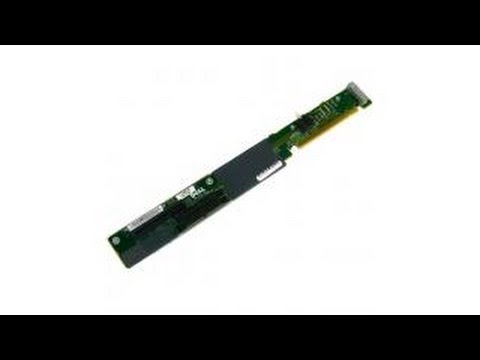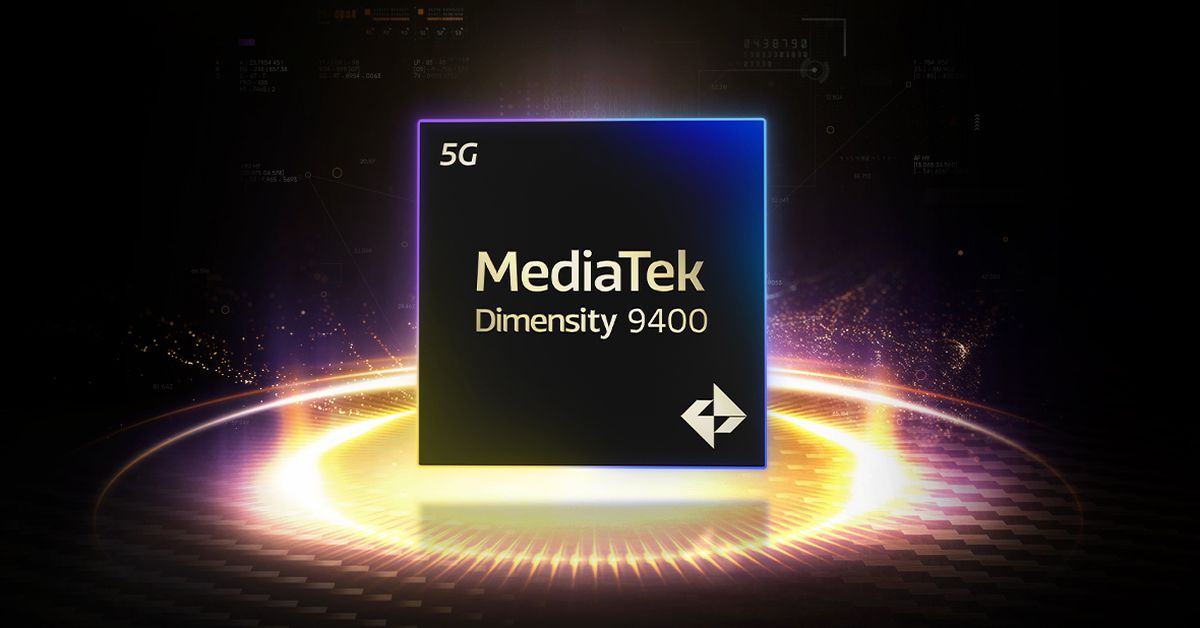A treaty finalized by the UK may bring about the end of the .io domain. Last week, the British government announced that it has agreed to give up ownership of the Chagos Islands, a territory in the Indian Ocean it has controlled since 1814 — relinquishing the .io domain with it.
Technology
How a UK treaty could spell the end of the .io domain

But first, let’s take a step back (and I mean far back) to see how we got here. According to the Encyclopedia Britannica, the Chagos Islands were settled by the French in the 1700s, who brought slaves to the archipelago. In 1814, the French ceded control of the Chagos Islands and the island country of Mauritius to the British. When the British took over, the Chagos Islands remained a dependency of Mauritius.
In 1965, the UK granted Mauritius its sovereignty, but the government decided to split off the Chagos Islands, making it a British Indian Ocean Territory. The UK ended up forcibly removing the Chagossian people so the US could build a military base on one of the islands, displacing more than 1,500 people, as detailed in this report from Human Rights Watch.
Eventually, the Chagos Islands — or the British Indian Ocean Territory — were given the IO country code. It was also assigned a matching .io country code domain in 1997. The British government granted the rights to sell .io domains to the Internet Computer Bureau (ICB), according to a 2014 report from GigaOm.
A country’s government is typically supposed to receive revenue for any sites that register using their country code domain. For example, Anguilla, which has the country code AI, was projected to make between $25 million and $30 million last year from websites registering with the .ai domain.
The IANA aims to retire old country code domains within five years
You’d think the Chagos Islands would make similar amounts of money from the .io domain. After all, thousands of buzzy tech startups and cryptocurrency companies — like itch.io, greenhouse.io, and opensea.io — adopted the domain, since “io” also serves as an abbreviation for “input/output.”
However, entrepreneur Paul Kane, who previously ran the ICB, told GigaOm that the British government collected some of the revenue, which came as a surprise to the Chagossian people. In 2020, the Chagossians submitted a claim to gain ownership of what they said was a $50 million property, as reported by Fortune.
But now, the UK’s finalized agreement will make the Chagos Islands part of Mauritius — a move Chagossians say the government didn’t even consult them on. With this change, the British Indian Ocean Territory is no more, calling into question the future of the .io domain.
As pointed out by the Every newsletter, the Internet Assigned Numbers Authority (IANA) has a process for retiring old country code domains within five years (with the possibility for extensions). The IANA established this rule after the Soviet Union’s .su domain lingered after its collapse, becoming a domain commonly used among cybercriminals.
Since then, IANA has also had to retire the .yu domain previously used for Yugoslavia, but it remained operational for years following the country’s breakup while government websites transitioned to new domains. And while the independent Solomon Islands does have the domain name .sb, where “B” stands for how it used to be a British protectorate, that domain was registered decades after it achieved independence. The UK still has the inactive .gb domain as well, but it’s considering getting rid of it.
For now, it’s still too early to tell what will become of the .io domain — whether it will go through a similar transitional period like .yu, or if the IANA will just let the Chagossans keep it. The Verge reached out to Identity Digital — the domain registrar that previously obtained the rights to sell .io domains — and IANA for information about .io’s future. We didn’t immediately hear back.
Servers computers
DELL DY417 $9 Price Reduction

DELL DY417 Poweredge 1950 Pci-e Sideplane Riser $9 http://core4solutions.com/dell-dy417.html
Core 4 Solutions is a leading IT hardware procurement firm, located just outside Minneapolis, MN.
IBM – HP – Dell – Cisco – AdTran
Over 40,000+ refurbished items in stock across servers, networking, storage and parts. If we don’t have it in our inventory, we can source it for you – our network of suppliers allows us to offer the most aggressive pricing available with short lead times.
W also have strategic partnerships with the major hardware manufacturers meaning we can offer new factory sealed product at much below MSRP.
Check our website daily, we update our current inventory once a day a midnight.
Contact us :
Core 4 Solutions
7668 Executive Drive
Eden Prairie, MN 55344
1.855.CORE4
1.855.6734
info@core4solutions.com
www.core4solutions.com .
source
Technology
Ex Google Maps team members get Sequoia backing to build an AI-powered collaboration board

When you talk to a chatbot like ChatGPT, Claude, or Gemini, your responses are largely linear. You often have to ask follow-up questions to get more information. For instance, when you are planning a trip, you might first ask the chatbot about the place and follow it up with questions on meal planning, activities, tips for the trip, and a packing list.
A team of former Google Maps engineers is building an infinite board interface called Cove. This design should help you generate several responses based on one question or prompt to an AI bot.
The startup founded by Stephen Chau, Andy Szybalski, and Mike Chu has raised $6 million in a seed round from Sequoia Capital, Elad Gil, Homebrew, Adverb, Scott Belsky, Lenny Rachitsky along with other angel investors.
The team has previously worked on some well known Google Maps features like Street View. Both Chau and Szybalski later joined Uber and were part of the team that worked on launching Uber Eats. Jess Lee, who is the lead investor for Sequoia for this round was also a colleague of Cove co-founders at Google Maps.
When they started working on this product, the trio felt that AI could be much more helpful in a collaborative space, especially for tasks like planning, writing, storyboarding, and research. On a call with TechCrunch, Chau said that thinking is a messy process, and you constantly iterate in your head while working on something. Your brain progressively creates branched-out thoughts.
“A lot of inspiration for Cove is really thinking about how we are used to human-to-human collaboration. When we work with other folks, we have a shared space, like a room where there is a shared context, and then we can communicate together on something. That’s what we wanted to build with Cove,” said Chau, expanding on why the startup chose to have an infinite canvas as an interface.
He opined that a chat interface for AI is very linear and not editable. For the most complex projects, having to deal with multiple conversation threads can be cumbersome.
The product
Cove has an infinite board interface on the web with a chatbot window in the bottom right corner. The bot shows you some suggestions for the projects you can work on through prompts so that you are not just staring at the blank space, thinking about how to get started. These examples include typical prompts like “Help me pick a birthday gift for my mom who likes gardening,” or “Help me plan a week-long trip to Yosemite for a family of four.”

When you click on any of these prompts, Cove will generate multiple response cards with tables and lists related to the prompt. For instance, if you ask the chatbot about trip planning, it can generate cards for meal planning, packing essentials, general tips, a list of hikes, and even create an itinerary.
You can edit any part of these cards by selecting some text and prompting it. You can also create a spin-off card or add more points, lists, or table elements to existing cards.
Users can add PDFs, links through a built-in browser, images, or a new blank card to add more context. They can also ask Cove questions about specific elements by referencing different cards and mentioning them.
Since this is a collaborative board, you can share the link with anyone. Just like in Google Docs, you can share it as a “view only” board or with editing abilities, depending on your needs. When people are collaborating on one board, all of them can invoke AI separately.
The startup has also released a Chrome extension. When you are browsing a website, you can invoke the extension, ask the AI bot about the site and content on screen, and add that to one of your projects or cards.

Opportunity and limitations
There are plenty of whiteboarding tools for collaborations, including Miro, TLDraw, Kosmik, and Visual Electric (which is also backed by Sequoia).
Cove feels that its AI features can attract a different kind of audience to use its product. The startup said that it is using a variety of models — including models from OpenAI, Anthropic, Meta (Llama) and Perplexity — to balance out costs of querying and deliverying quick answers.
Currently, Cove only works on the web interface, so the best way to use it is on the desktop. While you can access the boards on mobile, the small screen is not an ideal way to view them.
The founders said that people are using the tool for planning home renovation, business growth, and finding new sales projects. The company itself has used Cove to see customer feedback and generate better support articles.
“There are products where AI does the work for you and there are products where you do all the work. Cove is designed in a way where AI is more of your thought partner and collaborator. Think of it as an assistant that helps you rather than an oracle that tells you what to do,” Sequoia’s Lee said.
Cove is free to use with a limit of 100 cards. To unlock unlimited cards and get early access to new features, users will have to pay $10 a month.
Science & Environment
Opportunity in October’s choppiness for stocks

A man covering his head with Halloween pumpkin sits as trees’ leaves turns the colors of the autumn season at Central Park in New York, United States on October 30, 2023.
Fatih Aktas | Anadolu | Getty Images
This report is from today’s CNBC Daily Open, our international markets newsletter. CNBC Daily Open brings investors up to speed on everything they need to know, no matter where they are. Like what you see? You can subscribe here.
What you need to know today
Rebound rally
U.S. stocks rebounded on Tuesday, with all major indexes rising. Technology stocks, in particular, rallied to lift the Nasdaq Composite. APAC
Google, it’s not me, it’s you
Breaking up Google is one recommendation the U.S. Department of Justice made to remedy the tech giant’s monopoly in the search market – a ruling the courts reached in August after the U.S. government filed a case against Google in 2020. Legal experts, however, think a break-up isn’t very likely and that the courts will order Google to pursue other remedies.
Cooling oil prices
Crude oil prices fell on Tuesday amid reports by The New York Times and The Jerusalem Post that Israel might focus on striking Iran’s military sites in retaliation for its missile attacks. Both West Texas Intermediate and Brent futures retreated 4.63% during U.S. trading hours Tuesday, halting the red-hot rally oil prices have experienced the past week.
New Zealand cuts rates
The Reserve Bank of New Zealand slashed interest rates by half a percentage point on Wednesday. It’s the second consecutive cut after the RBNZ unexpectedly lowered rates by a quarter point in August. The central bank’s likely to make another half-point cut in November, Paul Bloxham, HSBC’s chief economist for Australia and New Zealand, told CNBC.
[PRO] Time to invest in China?
China’s blue-chip CSI 300 index popped 5.93% on Tuesday after markets returned from their seven-day Golden Week holiday. However, there are signs the sizzling rally is cooling. The CSI 300 is currently down around 5.6% as of Wednesday morning. On the back of such turbulence, CNBC Pro asks two strategists whether now’s the time to invest in China.
The bottom line
October in the U.S. is the season for pumpkin spice, but the month also harbors the dangerous edge of Halloween.
And getting spooked and soothed alternately is indeed what markets are doing in October.
After falling 0.96% on Monday, the S&P 500 added 0.97% on Tuesday. (Though it should be noted that doesn’t necessarily mean the S&P erased its losses and is up 1 basis point from Monday to Tuesday. Percentages are hard.)
Likewise, the Nasdaq Composite slipped 1.18% Monday but climbed 1.45% yesterday, zapped higher by a rally in tech stocks like Nvidia, Palo Alto Networks and Meta. The Dow Jones Industrial Average didn’t have that dramatic a swing, losing 0.94% Monday but advancing 0.3% Tuesday.
October, then, is truly living up to its reputation as the most volatile month for stocks. But investors should keep in mind the uncomfortable swings in markets aren’t always a good signal for the underlying health of stocks.
“While our expectation is for October to remain choppy, we don’t view the overall market action to be bearish and encourage investors to maintain perspective on the longer-term trends,” Robert Sluymer, technical strategist at RBC Wealth Management, wrote to clients in a Tuesday note.
Investment bank Piper Sandler has the same opinion on October’s turbulence. “October is historically a ‘backing and filling’ month as investors react to Q3 earnings results,” Craig Johnson, chief market technician, wrote in a Tuesday note.
In fact, when stocks dip because of mild repricing or a correction, that’s a good opportunity for investors to swoop in, according to Johnson.
The see-saw motion of stocks in October isn’t all that bad, then, if investors can seize the right time to enter the market or solidify their positions further. It doesn’t have to be spooky season all the time.
– CNBC’s Hakyung Kim, Samantha Subin and Alex Harring contributed to this story.
Servers computers
Server Rack Dsing 42U Rack nice lock @MissionitTechnology @MissionitTechnology

@Missionittechnology-l2s
@MissionitTechnology
Server rack dising
CCTV camera hik vision, dahua, UNV, ather CCTV solution and access control sound system time supported email address 👇👇
missionittechnology000@gmail.com
YouTube channel subscribe please 👇👇
https://www.youtube.com/@Missionittechnology-l2s
Facebook group link👇👇
https://facebook.com/groups/1034150891147930/ .
source
Technology
MediaTek’s new flagship chipset is ready for AI and tri-fold phones

MediaTek has formally announced its new flagship mobile chipset, the Dimensity 9400. It has the year-over-year spec bumps we’d expect to see, along with a few future-looking features just to cover all the bases.
The 9400 is built on a 3nm process and is “up to 40 percent more power-efficient” than its predecessor, the 9300. It comprises one Arm Cortex-X925 core running at 3.62GHz, along with three Arm Cortex-X4 and four Cortex-A720 cores, both of which were announced at last year’s Computex. MediaTek says that this combination results in 35 percent faster single-core performance and 28 percent faster multi-core performance compared to the 9300. The chipset also includes Arm’s new 12-core Immortalis-G925 GPU with 40 percent faster ray tracing.
That’s the basic stuff. On the more futuristic side, there’s MediaTek’s own eighth-generation NPU with support for training certain kinds of lightweight AI models on-device, with “80 percent faster large language model prompt performance.” It also supports AI video generation and provides a developer framework for creating agentic applications, which is AI that can actually do things for you. In theory, that’s the next big turn in AI, with everyone from Apple to Rabbit working out how to make it a reality.
In all likelihood, the Dimensity 9400 will be ready long before the most futuristic features it supports; MediaTek says that the 9400 will be available in the market in Q4 of this year. The company’s high-end chips tend to appear in flagship phones from Chinese OEMs like Vivo and Oppo. As such, the 9400 may not make it to the US, where Qualcomm chipsets dominate the popular Android flagships.
Technology
NYT Strands today — hints, answers and spangram for Wednesday, October 9 (game #220)

Strands is the NYT’s latest word game after the likes of Wordle, Spelling Bee and Connections – and it’s great fun. It can be difficult, though, so read on for my Strands hints.
Want more word-based fun? Then check out my Wordle today, NYT Connections today and Quordle today pages for hints and answers for those games.
SPOILER WARNING: Information about NYT Strands today is below, so don’t read on if you don’t want to know the answers.
NYT Strands today (game #220) – hint #1 – today’s theme
What is the theme of today’s NYT Strands?
• Today’s NYT Strands theme is… Full house
NYT Strands today (game #220) – hint #2 – clue words
Play any of these words to unlock the in-game hints system.
- BIFF
- FRAME
- ITCH
- PANT
- ROLL
- DUST
NYT Strands today (game #220) – hint #3 – spangram
What is a hint for today’s spangram?
• Where the heart is
NYT Strands today (game #220) – hint #4 – spangram position
What are two sides of the board that today’s spangram touches?
First: right, 5th row
Last: left, 5th row
Right, the answers are below, so DO NOT SCROLL ANY FURTHER IF YOU DON’T WANT TO SEE THEM.
NYT Strands today (game #220) – the answers

The answers to today’s Strands, game #220, are…
- HALL
- OFFICE
- STUDY
- KITCHEN
- LIBRARY
- PANTRY
- FOYER
- SPANGRAM: HOMEROOM
- My rating: Moderate
- My score: Perfect
Either the staff of the NYT live in far bigger houses than I do or they’re taking a few liberties with the answers here, because my home contains neither an OFFICE, LIBRARY, PANTRY or FOYER; I’m not an aristocrat… Still, the central theme of ‘rooms in a house’ is fair enough, were it not for the fact that the spangram is HOMEROOM, which is a different thing entirely.
Setting that aside, it’s not too tricky. The biggest problem is that so many rooms have the word, um, ROOM in them – meaning the likes of bedroom, bathroom, dining room etc were all ruled out. The challenge was therefore to think of rooms that don’t contain the actual word ‘room’, which took me a while.
How did you do today? Send me an email and let me know.
Yesterday’s NYT Strands answers (Tuesday 8 October, game #219)
- LOCK
- PASSWORD
- SAFE
- BACKUP
- FIREWALL
- ENCRYPTION
- SPANGRAM: SECURITY
What is NYT Strands?
Strands is the NYT’s new word game, following Wordle and Connections. It’s now out of beta so is a fully fledged member of the NYT’s games stable and can be played on the NYT Games site on desktop or mobile.
I’ve got a full guide to how to play NYT Strands, complete with tips for solving it, so check that out if you’re struggling to beat it each day.
-

 Womens Workouts2 weeks ago
Womens Workouts2 weeks ago3 Day Full Body Women’s Dumbbell Only Workout
-

 Science & Environment3 weeks ago
Science & Environment3 weeks agoHow to unsnarl a tangle of threads, according to physics
-

 Science & Environment3 weeks ago
Science & Environment3 weeks agoHyperelastic gel is one of the stretchiest materials known to science
-

 Technology3 weeks ago
Technology3 weeks agoWould-be reality TV contestants ‘not looking real’
-

 Science & Environment3 weeks ago
Science & Environment3 weeks ago‘Running of the bulls’ festival crowds move like charged particles
-

 Science & Environment3 weeks ago
Science & Environment3 weeks agoMaxwell’s demon charges quantum batteries inside of a quantum computer
-

 News2 weeks ago
News2 weeks agoOur millionaire neighbour blocks us from using public footpath & screams at us in street.. it’s like living in a WARZONE – WordupNews
-

 Science & Environment3 weeks ago
Science & Environment3 weeks agoSunlight-trapping device can generate temperatures over 1000°C
-
News3 weeks ago
the pick of new debut fiction
-

 Science & Environment3 weeks ago
Science & Environment3 weeks agoHow to wrap your mind around the real multiverse
-

 Science & Environment3 weeks ago
Science & Environment3 weeks agoQuantum ‘supersolid’ matter stirred using magnets
-

 Science & Environment3 weeks ago
Science & Environment3 weeks agoLiquid crystals could improve quantum communication devices
-

 Science & Environment3 weeks ago
Science & Environment3 weeks agoITER: Is the world’s biggest fusion experiment dead after new delay to 2035?
-

 Science & Environment3 weeks ago
Science & Environment3 weeks agoQuantum forces used to automatically assemble tiny device
-

 Science & Environment3 weeks ago
Science & Environment3 weeks agoPhysicists are grappling with their own reproducibility crisis
-

 Science & Environment3 weeks ago
Science & Environment3 weeks agoWhy this is a golden age for life to thrive across the universe
-

 News3 weeks ago
News3 weeks agoYou’re a Hypocrite, And So Am I
-

 Sport3 weeks ago
Sport3 weeks agoJoshua vs Dubois: Chris Eubank Jr says ‘AJ’ could beat Tyson Fury and any other heavyweight in the world
-

 Science & Environment3 weeks ago
Science & Environment3 weeks agoCaroline Ellison aims to duck prison sentence for role in FTX collapse
-
Business2 weeks ago
Eurosceptic Andrej Babiš eyes return to power in Czech Republic
-

 Science & Environment3 weeks ago
Science & Environment3 weeks agoTime travel sci-fi novel is a rip-roaringly good thought experiment
-

 Science & Environment3 weeks ago
Science & Environment3 weeks agoLaser helps turn an electron into a coil of mass and charge
-

 Science & Environment3 weeks ago
Science & Environment3 weeks agoNuclear fusion experiment overcomes two key operating hurdles
-

 Science & Environment3 weeks ago
Science & Environment3 weeks agoNerve fibres in the brain could generate quantum entanglement
-

 Technology2 weeks ago
Technology2 weeks ago‘From a toaster to a server’: UK startup promises 5x ‘speed up without changing a line of code’ as it plans to take on Nvidia, AMD in the generative AI battlefield
-

 Football2 weeks ago
Football2 weeks agoFootball Focus: Martin Keown on Liverpool’s Alisson Becker
-

 Science & Environment3 weeks ago
Science & Environment3 weeks agoRethinking space and time could let us do away with dark matter
-

 News3 weeks ago
News3 weeks ago▶️ Hamas in the West Bank: Rising Support and Deadly Attacks You Might Not Know About
-

 Science & Environment2 weeks ago
Science & Environment2 weeks agoX-rays reveal half-billion-year-old insect ancestor
-

 MMA2 weeks ago
MMA2 weeks agoConor McGregor challenges ‘woeful’ Belal Muhammad, tells Ilia Topuria it’s ‘on sight’
-

 News3 weeks ago
News3 weeks ago▶️ Media Bias: How They Spin Attack on Hezbollah and Ignore the Reality
-
Business2 weeks ago
Should London’s tax exiles head for Spain, Italy . . . or Wales?
-

 Science & Environment3 weeks ago
Science & Environment3 weeks agoA slight curve helps rocks make the biggest splash
-

 News3 weeks ago
News3 weeks agoNew investigation ordered into ‘doorstep murder’ of Alistair Wilson
-

 News3 weeks ago
News3 weeks agoIsrael strikes Lebanese targets as Hizbollah chief warns of ‘red lines’ crossed
-

 Science & Environment3 weeks ago
Science & Environment3 weeks agoFuture of fusion: How the UK’s JET reactor paved the way for ITER
-

 Science & Environment3 weeks ago
Science & Environment3 weeks agoA new kind of experiment at the Large Hadron Collider could unravel quantum reality
-

 Science & Environment3 weeks ago
Science & Environment3 weeks agoUK spurns European invitation to join ITER nuclear fusion project
-

 CryptoCurrency3 weeks ago
CryptoCurrency3 weeks agoCardano founder to meet Argentina president Javier Milei
-

 News2 weeks ago
News2 weeks agoWhy Is Everyone Excited About These Smart Insoles?
-

 Science & Environment2 weeks ago
Science & Environment2 weeks agoMeet the world's first female male model | 7.30
-

 Technology2 weeks ago
Technology2 weeks agoGet ready for Meta Connect
-

 Health & fitness2 weeks ago
Health & fitness2 weeks agoThe 7 lifestyle habits you can stop now for a slimmer face by next week
-

 Health & fitness3 weeks ago
Health & fitness3 weeks agoThe maps that could hold the secret to curing cancer
-

 Science & Environment3 weeks ago
Science & Environment3 weeks agoWhy we need to invoke philosophy to judge bizarre concepts in science
-

 CryptoCurrency3 weeks ago
CryptoCurrency3 weeks agoLow users, sex predators kill Korean metaverses, 3AC sues Terra: Asia Express
-
Politics3 weeks ago
UK consumer confidence falls sharply amid fears of ‘painful’ budget | Economics
-

 Womens Workouts3 weeks ago
Womens Workouts3 weeks agoBest Exercises if You Want to Build a Great Physique
-

 Womens Workouts3 weeks ago
Womens Workouts3 weeks agoEverything a Beginner Needs to Know About Squatting
-

 News2 weeks ago
News2 weeks agoFour dead & 18 injured in horror mass shooting with victims ‘caught in crossfire’ as cops hunt multiple gunmen
-

 Technology2 weeks ago
Technology2 weeks agoRobo-tuna reveals how foldable fins help the speedy fish manoeuvre
-

 Technology2 weeks ago
Technology2 weeks agoQuantum computers may work better when they ignore causality
-

 Sport1 week ago
Sport1 week agoWatch UFC star deliver ‘one of the most brutal knockouts ever’ that left opponent laid spark out on the canvas
-

 Sport3 weeks ago
Sport3 weeks agoUFC Edmonton fight card revealed, including Brandon Moreno vs. Amir Albazi headliner
-

 CryptoCurrency3 weeks ago
CryptoCurrency3 weeks agoEthereum is a 'contrarian bet' into 2025, says Bitwise exec
-

 Health & fitness3 weeks ago
Health & fitness3 weeks agoThe secret to a six pack – and how to keep your washboard abs in 2022
-
Business3 weeks ago
JPMorgan in talks to take over Apple credit card from Goldman Sachs
-

 Science & Environment3 weeks ago
Science & Environment3 weeks agoQuantum time travel: The experiment to ‘send a particle into the past’
-

 Science & Environment3 weeks ago
Science & Environment3 weeks agoBeing in two places at once could make a quantum battery charge faster
-

 Science & Environment3 weeks ago
Science & Environment3 weeks agoA tale of two mysteries: ghostly neutrinos and the proton decay puzzle
-

 CryptoCurrency3 weeks ago
CryptoCurrency3 weeks agoBitcoin miners steamrolled after electricity thefts, exchange ‘closure’ scam: Asia Express
-

 CryptoCurrency3 weeks ago
CryptoCurrency3 weeks agoDorsey’s ‘marketplace of algorithms’ could fix social media… so why hasn’t it?
-

 CryptoCurrency3 weeks ago
CryptoCurrency3 weeks agoDZ Bank partners with Boerse Stuttgart for crypto trading
-

 CryptoCurrency3 weeks ago
CryptoCurrency3 weeks agoBitcoin bulls target $64K BTC price hurdle as US stocks eye new record
-

 CryptoCurrency3 weeks ago
CryptoCurrency3 weeks agoBlockdaemon mulls 2026 IPO: Report
-
News3 weeks ago
The Project Censored Newsletter – May 2024
-

 TV2 weeks ago
TV2 weeks agoCNN TÜRK – 🔴 Canlı Yayın ᴴᴰ – Canlı TV izle
-

 Science & Environment2 weeks ago
Science & Environment2 weeks agoCNN TÜRK – 🔴 Canlı Yayın ᴴᴰ – Canlı TV izle
-

 Womens Workouts2 weeks ago
Womens Workouts2 weeks ago3 Day Full Body Toning Workout for Women
-

 Servers computers2 weeks ago
Servers computers2 weeks agoWhat are the benefits of Blade servers compared to rack servers?
-

 News2 weeks ago
News2 weeks agoUS Newspapers Diluting Democratic Discourse with Political Bias
-

 Technology2 weeks ago
Technology2 weeks agoThe best robot vacuum cleaners of 2024
-

 News3 weeks ago
News3 weeks agoChurch same-sex split affecting bishop appointments
-

 Politics3 weeks ago
Politics3 weeks agoTrump says he will meet with Indian Prime Minister Narendra Modi next week
-

 Science & Environment3 weeks ago
Science & Environment3 weeks agoHow one theory ties together everything we know about the universe
-

 News3 weeks ago
News3 weeks agoBrian Tyree Henry on voicing young Megatron, his love for villain roles
-

 Technology3 weeks ago
Technology3 weeks agoThe ‘superfood’ taking over fields in northern India
-

 Science & Environment3 weeks ago
Science & Environment3 weeks agoTiny magnet could help measure gravity on the quantum scale
-

 Science & Environment3 weeks ago
Science & Environment3 weeks agoHow do you recycle a nuclear fusion reactor? We’re about to find out
-

 CryptoCurrency3 weeks ago
CryptoCurrency3 weeks agoDecentraland X account hacked, phishing scam targets MANA airdrop
-

 CryptoCurrency3 weeks ago
CryptoCurrency3 weeks agoRedStone integrates first oracle price feeds on TON blockchain
-

 CryptoCurrency3 weeks ago
CryptoCurrency3 weeks ago‘No matter how bad it gets, there’s a lot going on with NFTs’: 24 Hours of Art, NFT Creator
-
Business3 weeks ago
Thames Water seeks extension on debt terms to avoid renationalisation
-
Business3 weeks ago
How Labour donor’s largesse tarnished government’s squeaky clean image
-
Politics3 weeks ago
‘Appalling’ rows over Sue Gray must stop, senior ministers say | Sue Gray
-

 News3 weeks ago
News3 weeks agoBrian Tyree Henry on voicing young Megatron, his love for villain roles
-

 CryptoCurrency3 weeks ago
CryptoCurrency3 weeks agoCoinbase’s cbBTC surges to third-largest wrapped BTC token in just one week
-

 MMA3 weeks ago
MMA3 weeks agoRankings Show: Is Umar Nurmagomedov a lock to become UFC champion?
-

 Travel2 weeks ago
Travel2 weeks agoDelta signs codeshare agreement with SAS
-

 Politics2 weeks ago
Politics2 weeks agoHope, finally? Keir Starmer’s first conference in power – podcast | News
-
Business1 week ago
Ukraine faces its darkest hour
-

 Technology3 weeks ago
Technology3 weeks agoiPhone 15 Pro Max Camera Review: Depth and Reach
-

 CryptoCurrency3 weeks ago
CryptoCurrency3 weeks agoCrypto scammers orchestrate massive hack on X but barely made $8K
-

 CryptoCurrency3 weeks ago
CryptoCurrency3 weeks agoSEC asks court for four months to produce documents for Coinbase
-

 CryptoCurrency3 weeks ago
CryptoCurrency3 weeks ago‘Silly’ to shade Ethereum, the ‘Microsoft of blockchains’ — Bitwise exec
-

 Womens Workouts3 weeks ago
Womens Workouts3 weeks agoHow Heat Affects Your Body During Exercise
-

 Womens Workouts3 weeks ago
Womens Workouts3 weeks agoKeep Your Goals on Track This Season
-

 Science & Environment3 weeks ago
Science & Environment3 weeks agoSingle atoms captured morphing into quantum waves in startling image
-

 News3 weeks ago
News3 weeks agoHow FedEx CEO Raj Subramaniam Is Adapting to a Post-Pandemic Economy
-

 Science & Environment3 weeks ago
Science & Environment3 weeks agoMost accurate clock ever can tick for 40 billion years without error

You must be logged in to post a comment Login